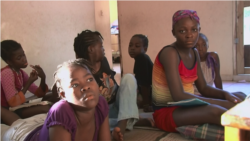Of the estimated 35.3 million people living with HIV/AIDS, some 3.2 million are children under the age of 15. Most of them, about 91 percent, live in sub-Saharan Africa. In 9 out of 10 cases, these children were infected during pregnancy, childbirth or through breast feeding.
At birth, a baby’s immune system is not yet fully developed. In a healthy child, it fully develops by about 6 months, but up to that point, the infant’s immunity is boosted by antibodies transferred from the mother through breast milk. When mothers with HIV receive the proper medications, they can safely breastfeed their infants. However, when HIV-infected mothers do not receive anti-HIV medicines, their infants are at risk of becoming infected.
Children with HIV infection often get sick. They have a difficult time fighting off common childhood maladies such as ear and sinus infections, pneumonias, urinary tract infections, intestinal illness, skin disease, and meningitis. In developing countries in particular, tuberculosis, diarrhea, and respiratory illnesses are common in HIV-positive children.
If an HIV positive child does not receive anti-retroviral treatment, a cycle of illness may set in and further undermine the child’s health. 80 percent of children infected with HIV at birth or in infancy die before their 5th birthday. It is therefore important to begin treating HIV-positive children with anti-retroviral drugs as soon as possible. If taken every day, proper medication can drastically reduce the concentration of HIV in the bloodstream, thereby slowing the progression of the disease. But sadly, only 24 percent of HIV-infected children have access to anti-retroviral drugs.
That is why the United States, through the U.S. President’s Emergency Plan for AIDS Relief, or PEPFAR, in partnership with the Children’s Investment Fund Foundation, launched the Accelerating Children’s HIV/AIDS Treatment, or ACT initiative. This two-year, $200 million program aims to double the number of children receiving anti-retroviral treatment. Through this Initiative, some 300,000 additional children living in Cameroon, Democratic Republic of Congo, Kenya, Lesotho, Malawi, Mozambique, Tanzania, Zambia, and Zimbabwe will get a better chance to grow to adulthood and live full, healthy lives.
Healthy children who can pursue their dreams are Africa’s future — they will grow economies, create jobs, and contribute to their families and communities for decades to come.

















